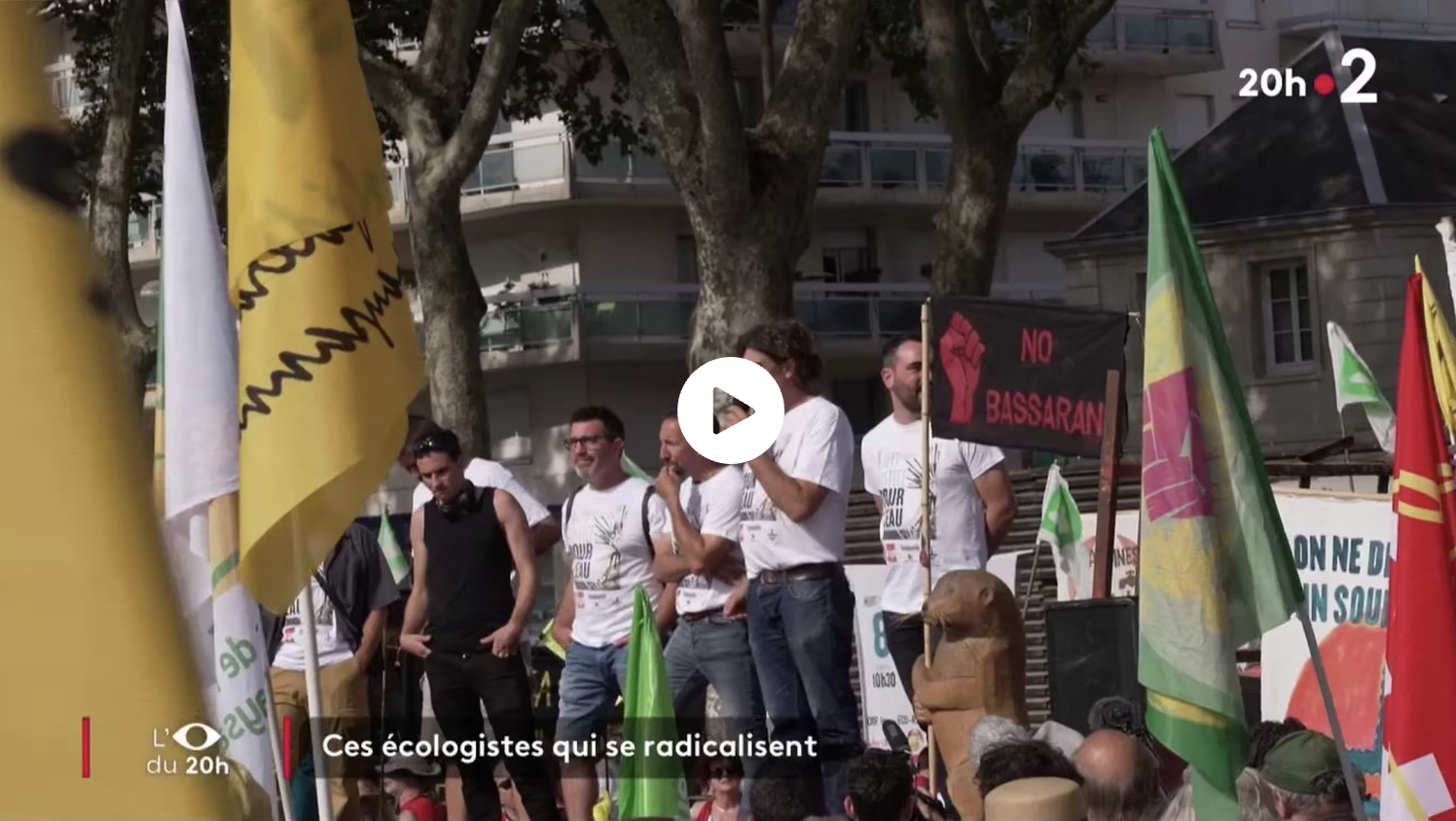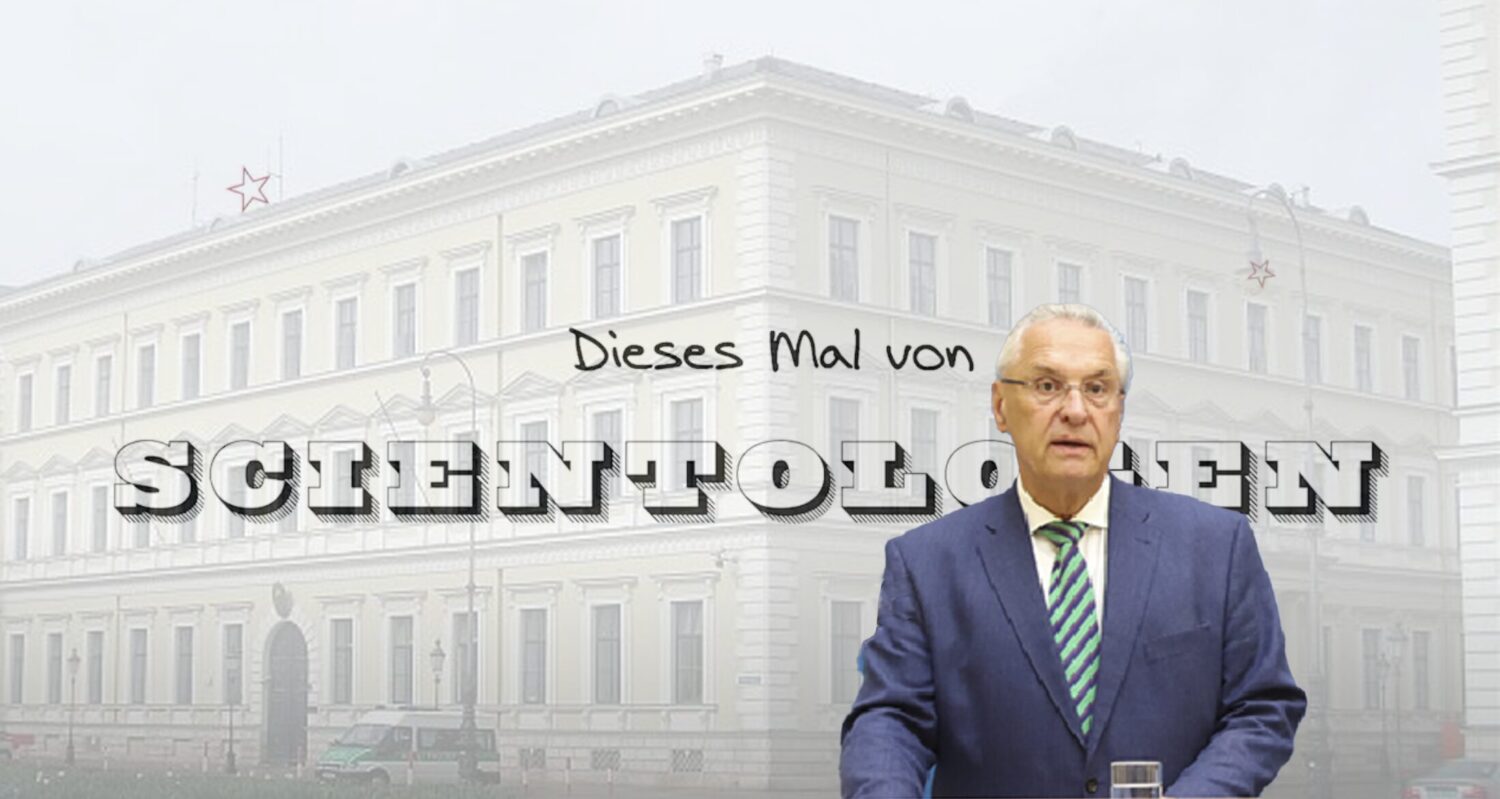Journalistic ethics is a delicate subject. There is such a need to protect the press from various forms of interference, and to preserve its freedom, that very often, any criticism of a journalist or a press service is perceived as an attempt to muzzle his or her speech. And this is often the case. Laws protecting journalists’ freedom are necessary. But what about ethical lapses? Should we refrain from criticizing them to avoid weakening the profession, already too often decried?
On the contrary. Respect for ethical rules is the best protection journalists can offer themselves. Every time one of us violates an ethical rule, the whole profession is weakened. That’s why it’s so important to promote the ethics of the journalistic profession, and not let the excesses of some of us go unchallenged.
France 2: the eye of the 8 o’clock news
In France, there’s a national public service TV channel (i.e. owned by the state) called France 2. Every evening of the week, you can watch the 8 p.m. news program, which broadcasts the day’s news and various reports. Within this newscast, reports are broadcast under the title “L’œil du 20h” (The Eye of the 8 o’clock), which presents itself as an “investigative program with an offbeat take on current affairs”. It’s two reports from “L’œil du 20h” that have caught my attention in recent months, not so much for the themes chosen, but rather for the immoderate use of techniques that may raise ethical issues.
The first, broadcast on November 20, 2023, is entitled “who are the new climate activists”, subtitled “radicalizing ecologists”. The second, more recent report, broadcast on June 26, 2024, is entitled “Undercover in Scientology“. While the two targets of these reports, environmental activists and Scientologists, don’t seem to have much in common (although it’s conceivable that there are Scientologist environmentalists and vice versa), they do share a characteristic relevant to our article: in France, both are facing a certain hostility from a fringe of the current government.
Hidden cameras, false identities and ethics
The two reports on France 2 also have in common the use of techniques which, with a few exceptions, are forbidden by the codes of journalistic ethics in force around the world. These codes are diverse and there are many of them (each press service often has its own code of ethics), but a small number of them are widely accepted by the profession in Europe: the Munich Charter, signed on November 24, 1971 and adopted by the European Federation of Journalists, and the Charter of Professional Ethics for Journalists, drafted in 1918 and amended in 2011. At international level, the main code is the International Federation of Journalists’ Worldwide Charter of Ethics for Journalists, adopted in 2019 in Tunis.
The techniques discussed here are mainly the use of hidden cameras and investigation under a false identity, while concealing one’s status as a journalist. On these points, the Charter of Professional Ethics for Journalists is strict: it prohibits the use of unfair means to obtain information, and only the safety of the journalist or that of his sources, or the seriousness of the facts, can justify concealing one’s status as a journalist, in which case an explanation must be given to the public. The Munich Charter is even stricter, prohibiting the use of “unfair methods to obtain information, photographs and documents”. Finally, the Tunis Worldwide Ethics Charter opens up the field of possibilities by stating that “The journalist will not use unfair methods to obtain information, images, documents and data. He/she will always state that he/she is a journalist, and will refrain from using hidden recordings of images and sounds, unless the gathering of information of general interest proves manifestly impossible for him/her in such a case.”
Up in arms over environmental activists

In the first report on environmental activists, journalist Lorraine Poupon attacked the environmental movements Extinction Rebellion and Dernière Rénovation, without naming them but they are easily recognizable. The report begins with “the Minister of the Interior designates them as a new threat”, followed by an extract from a speech by the Minister of the Interior, Gérald Darmanin: “This is ecoterrorism.” The tone is set. Then the journalist indicates that she has infiltrated (integrated) one of these organizations. This is followed by a sequence in which the undercover journalist uses a hidden camera to film a meeting of the Dernière Rénovation movement, during which we see a person described as “a young woman given a two-month suspended prison sentence for vandalism” (the one you might think was a violent delinquent had in fact only thrown paint on a Ministry of the Interior building, which the report fails to specify).
Then a second infiltration, this time of a meeting organized by Extinction Rebellion in Marseille, again using a hidden camera. The topic is non-violent civil disobedience. When a lecturer explains that the instruction in the event of arrest is to reply “I have nothing to declare”, an instruction often repeated by criminal lawyers to all their clients, the journalist comments: “The trainers clearly evoke their distrust of the police”. While the journalist’s editorial freedom allows her to make such comments, the question is more delicate when it is a public service channel that relays in this way the discourse of the Ministry of the Interior on a movement that could be described as political, when the neutrality of the service is the rule. But above all, what about the use of hidden cameras and the concealment of one’s status as a journalist?
Public meetings, so easily accessible information
The Marseille meeting organized by Extinction Rebellion was a public meeting. So there was no need to “infiltrate” to obtain information about what was being said. The Dernière Rénovation meeting was also held in the open at theAcadémie du Climat, within the Paris City Hall. Once again, there was no need for a hidden camera. Gathering information was easy, with no need to resort to disloyal techniques. As for safety or “the seriousness of the facts”, we fail to see how the journalist’s safety could have been compromised, and we are still looking for serious facts that the journalist would have wanted to cover. The report makes no mention of this, and “civil disobedience”, which can sometimes border on the illegal, is in any case freely explained on the websites of the movements concerned.
Contacted for this article, Eva Morel, co-president of Quota Climat, an organization that seeks to “bring the ecological emergency onto the media agenda”, tells us that ” beyond the cameras, it’s a set of caricatured sequences that pose a problem in this report: applause for an environmental activist leaving police custody at the Académie du Climat without mentioning the rest of the purely peaceful and legal activities taking place there, enigmatic music inviting the viewer to think that this place is hiding shenanigans when everyone has access to it, etc.“
Nicolas Turcev, journalist and press relations manager for Dernière Rénovation, says he has not been contacted by France 2, even though the editors have his contact details. When contacted, he refers us to the interview he gave for Arrêt Sur Image: “The excerpt which was captured is a statement that we assume to be true, and that we can say to any journalist on a set with our face uncovered. There’s a recourse to these methods just to give an anxiety-inducing tone to the report, which didn’t need one since we’re available and speaking with our faces uncovered.” He adds that the “blurred faces prevent the viewer from identifying” with the filmed ecologists, who are then “hardly humanized, even though they are people with a very thoughtful, political, civic commitment”.
Disturbing silences
Loris Guémart, a journalist with Arrêt sur Image, points out that the report was silent on the Conseil d’Etat ruling which overturned the Interior Minister’s decision to dissolve the environmental association Les Soulèvements de la Terre. This decision had been handed down some ten days before the broadcast of the report, and some saw in the report a revenge on the part of the Ministry, which had not appreciated the decision of the Conseil d’État. He explains that it would have been appropriate not to overlook the fact that the supreme court had ruled that Les Soulèvements de la Terre did not incite, either explicitly or implicitly, “violent acts likely to seriously disturb public order”. A journalist on assignment for a ministry, in a vengeance operation through a state media like France 2?
In addition, while the 8 o’clock news reporter should have given an “explanation to the public” on the reasons for using such unfair techniques, not only did she refrain from doing so, but she also failed to explain why she didn’t simply ask the representatives of these movements to speak on camera. For Eva Morel, “the majority of the spokespeople for these organizations are indeed public and even media figures, so it seems odd that they didn’t speak out”.
Infiltration, concealment and hidden cameras in a Scientology church
The second report sets the tone right from the title: “Infiltration into Scientology”. In Paris, the Church of Scientology recently inaugurated its new headquarters a stone’s throw from the Stade de France (France Stadium), the venue for the Olympic Games. This made the headlines and certainly piqued the curiosity of l’Œil du 20h.

But we’re still looking in vain for the reasons that might have prompted the journalist to use tricks to get her information. Whatever one may think of the Church of Scientology, it’s hard to imagine Scientologists deciding to beat up a journalist who came to interview them. In fact, there are many examples of journalists and Scientologists meeting on the Internet these days, and politeness, courtesy and decorum are the order of the day.
How serious are the facts? Well, here again, it’s hard to find evidence of anything serious in the report. The most serious thing for the journalist seems to be that “the speech given to people in pain can be surprising”. As proof of this, she points out that “being treated by a psychiatrist or taking an antidepressant would not be appropriate care, according to this volunteer at the center”. However, the blurred “volunteer” in question replies that “It’s just the opposite of what we do. If the person decides to go into psychiatry, that’s their choice.” He adds that it’s just “totally incompatible” with Scientology. It’s a far cry from any kind of subversive discourse… Apart from that, nothing factual. Our infiltrator seems well received, she’s well taken care of, and will leave free and in great form.
A request for a post-infiltration shoot – lies on screen
But as soon as the report begins, an explanation is given: “To get inside, we made an official request to film, which was refused”. So, “to get through the doors of this center, I went undercover with a hidden camera for several weeks. I presented myself as an unemployed thirty-something looking for meaning in her life”. We can deduce from this that, having been refused permission to film inside the building, our journalist felt she had no other way of reporting the images than to sneak in and film without the Scientologists’ knowledge. This is ethically problematic in more ways than one. Firstly, the right to film inside a private building is not an absolute right for journalists. Like everyone else, they must obtain authorization, and the fact that this authorization is refused does not mean that there is no other way of obtaining information than by using disloyal means such as concealing one’s status as a journalist or using hidden cameras. Here again, what about asking for an interview with the spokespersons, or with Scientologists? Or simply having visited the various websites of the Church of Scientology, on which in fact anyone can find the information broadcast in the report? (I didn’t find a single piece of information in the report that I didn’t also manage to find easily on the web).

But more than that, when contacted by us, the Church of Scientology replied: “It’s a pathetic lie. The ‘filming request’ was sent on June 13 by another journalist, but Lorraine Poupon had already begun her infiltration on June 6. So she couldn’t have cared less about our response. Furthermore, we merely said that we were not organizing visits for journalists at the moment, but no requests for face-to-face interviews were subsequently made.”
Prudence, journalistic ethics and social media
Certainly, there are several other ethical violations in these two reports, but we’ll just pick out one more here. The Global Code of Ethics for Journalists requires journalists to be “prudent in the use of words and documents published on social media”. The reason this rule is mentioned is because it’s often on social networks that it becomes clear whether the journalist is operating with purely informative intent or following some other agenda.
In the case of the first report, Lorraine Poupon will post on her X account (ex-Twitter) a presentation of her report that conforms to the Ministry of the Interior’s description: “There’s been a lot of talk about ‘ecoterrorists’, ‘green Khmers’ or even, ‘hydrofurious’.” Climate activists understandably didn’t appreciate this. The use of outrageous vocabulary conflating environmental activism and terrorism is definitely ill-advised, and at the very least a “lack of prudence” in the use of social media. It does, however, reveal the journalist’s state of mind, and thus the lack of political neutrality on the part of France 2, which broadcast the report.

As for Scientologists, on the journalist’s LinkedIn account, we find a presentation that includes “Once through the doors, I discovered that they (very) quickly got me to pull out my credit card to buy more and more courses and seminars”. Then on X, “They promise us ‘total freedom’, but at what price? (A priori several thousand euros, because in Scientology, everything is paid for and everything is expensive!)”. When contacted, the Church of Scientology replied with accounting documents: “Lorraine Poupon, under her assumed name, spent a total of 131 euros with us in two weeks. This includes 4 books, a seminar she attended and a course she also took.” That’s a long way from thousands of euros, and while it poses a problem of accuracy and truth, it also indicates a desire to create a polemical and controversial vision of the movement, in the absence of evidence.
We also discovered on her Facebook account that the journalist is a member of a private group entitled “Tous unis contre la scientologie” (“All united against Scientology”), which again tends to lend credence to the idea that the show was intended to demonize Scientology, rather than to provide honest information.
The point here is neither to promote the aforementioned environmental movements, nor Scientology, but to make a point about what good journalism should be, even when it deals with subjects that can be divisive. Unfair means are to be avoided, with the exception of the strictly defined exceptions mentioned above. Hidden cameras, false identities and concealing one’s status as a journalist for no good reason, are dishonest and often indicate a lack of interesting elements, and therefore a need to make a spectacle, to create unnecessary mystery and to dehumanize the people blurred in the reports.
We naturally contacted Lorraine Poupon from France 2 for her opinion on these reports and the criticism they have generated, but unfortunately, she did not respond to our requests.
Editor’s note: After writing this article, we found out that L’Oeil du 20h has been already found to violate ethics codes by the French Council of Deontology of Journalists and Mediation in 2023: https://rebelles-lemag.com/2023/05/14/ecoles-steiner-cdjm-france2/














 English
English French
French Spanish
Spanish German
German Dutch
Dutch Italian
Italian Danish
Danish Portuguese
Portuguese Greek
Greek Russian
Russian Swedish
Swedish Bulgarian
Bulgarian Hungarian
Hungarian Catalan
Catalan Ukrainian
Ukrainian Polish
Polish Basque
Basque Chinese (Simplified)
Chinese (Simplified) Japanese
Japanese Hebrew
Hebrew Arabic
Arabic Swahili
Swahili Amharic
Amharic Irish
Irish Afrikaans
Afrikaans Albanian
Albanian Armenian
Armenian Azerbaijani
Azerbaijani Belarusian
Belarusian Bengali
Bengali Bosnian
Bosnian Cebuano
Cebuano Chichewa
Chichewa Chinese (Traditional)
Chinese (Traditional) Corsican
Corsican Croatian
Croatian Czech
Czech Esperanto
Esperanto Estonian
Estonian Filipino
Filipino Finnish
Finnish Frisian
Frisian Galician
Galician Georgian
Georgian Gujarati
Gujarati Haitian Creole
Haitian Creole Hausa
Hausa Hawaiian
Hawaiian Hindi
Hindi Hmong
Hmong Icelandic
Icelandic Igbo
Igbo Indonesian
Indonesian Javanese
Javanese Kannada
Kannada Kazakh
Kazakh Khmer
Khmer Korean
Korean Kurdish (Kurmanji)
Kurdish (Kurmanji) Kyrgyz
Kyrgyz Lao
Lao Latin
Latin Latvian
Latvian Lithuanian
Lithuanian Luxembourgish
Luxembourgish Macedonian
Macedonian Malagasy
Malagasy Malay
Malay Malayalam
Malayalam Maltese
Maltese Maori
Maori Marathi
Marathi Mongolian
Mongolian Myanmar (Burmese)
Myanmar (Burmese) Nepali
Nepali Norwegian
Norwegian Pashto
Pashto Persian
Persian Punjabi
Punjabi Romanian
Romanian Samoan
Samoan Scottish Gaelic
Scottish Gaelic Serbian
Serbian Sesotho
Sesotho Shona
Shona Sindhi
Sindhi Sinhala
Sinhala Slovak
Slovak Slovenian
Slovenian Somali
Somali Sundanese
Sundanese Tajik
Tajik Tamil
Tamil Telugu
Telugu Thai
Thai Turkish
Turkish Urdu
Urdu Uzbek
Uzbek Vietnamese
Vietnamese Welsh
Welsh Xhosa
Xhosa Yiddish
Yiddish Yoruba
Yoruba Zulu
Zulu